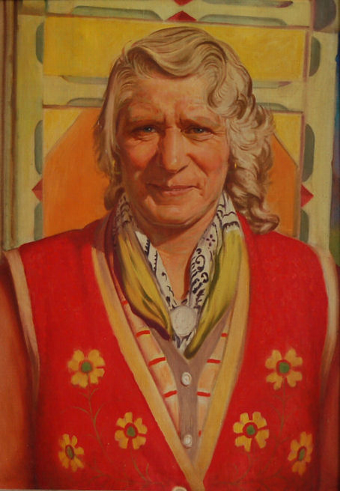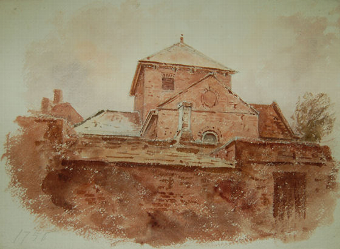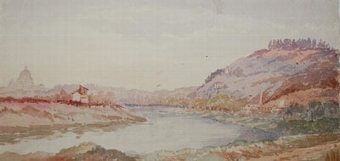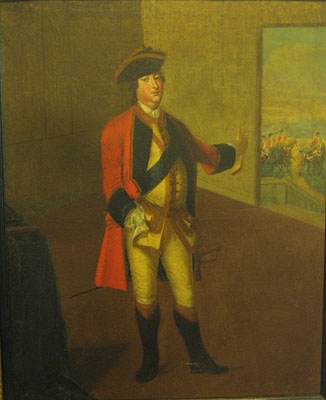featured item
tintern abbey on the river wye, monmouthshire
- View other items in:
- antiques interior design modern and vintage
- other interior design
artware ltd
Enquire about this antique
Artware Ltd has 565 antiques for sale.
click here to see them all
Tintern Abbey (Welsh: Abaty Tyndyrn) was founded by Walter de Clare, Lord of Chepstow, on May 9, 1131. Situated on the River Wye in Monmouthshire, it was only the second Cistercian foundation in Britain, and the first in Wales. It is one of the most spectacular ruins in the country and inspired the William Wordsworth poem "Lines Composed a Few Miles above Tintern Abbey", Alfred, Lord Tennyson''s poem "Tears, Idle Tears", more than one painting by J. M. W. Turner and a band to name themselves "Tintern Abbey". The village of Tintern adjoins the abbey ruins. Walter de Clare, of the powerful family of Clare, was related by marriage to William Giffard, Bishop of Winchester, who had introduced the first colony of Cistercians to Waverley, Surrey in 1128. The monks for Tintern came from a daughter house of C?teaux, L''Aum?ne, in the diocese of Blois in France. In time, Tintern established two daughter houses, Kingswood in Gloucestershire (1139) and Tintern Parva, west of Wexford in south east Ireland (1203).
The Cistercian monks (or White Monks) who lived at Tintern followed the Rule of St. Benedict. The Carta Caritatis (Charter of Love) laid out their basic principles, namely:
Obedience
Poverty
Chastity
Silence
Prayer
Work
With this austere way of life, the Cistercians were one of the most successful orders in the 12th and 13th centuries. The lands of the Abbey were divided into agricultural units or granges, on which local people worked and provided services such as smithies to the Abbey. Many endowments of land on both sides of the Wye were made to the Abbey.
The present-day remains of Tintern are a mixture of building works covering a 400-year period between 1136 and 1536. Very little remains of the first buildings; a few sections of walling are incorporated into later buildings and the two recessed cupboards for books on the east of the cloisters are from this period. The church of that time was smaller than the present building and was slightly to the north.Tintern Abbey viewed from the far (English) bank of the River Wye in 2004During the 13th century, the Abbey was virtually rebuilt; first the cloisters and the domestic ranges, then finally the great church between 1269 and 1301. The first mass in the rebuilt presbytery was recorded to have taken place in 1288, and the building was consecrated in 1301, although building work continued for several decades[1]. Roger Bigod, 5th Earl of Norfolk, the then lord of Chepstow, was a generous benefactor; his monumental undertaking was the rebuilding of the church. The Abbey put his coat of arms in the glass of its east window in gratitude to him.It is this great church that we see today. It has a cruciform plan with an aisled nave; two chapels in each transept and a square ended aisled chancel. The Gothic church represents the architectural developments of its day in the contemporary Decorated style. The buildings are constructed in Old Red Sandstone, of colours varying from purple to buff and grey. The main church building is 72 metres long.
In 1326 King Edward II visited Tintern and spent two nights there. The Black Death swept the country in 1349 and it became impossible to attract new recruits for the lay brotherhood. Changes to the way the granges were tenanted out rather than worked by lay brothers show the difficulty Tintern was experiencing with labour shortages. In the early 1400s Tintern was experiencing financial difficulties, due in part to the effects of the Welsh uprising under Owain Glyndwr against the English kings, and Abbey properties were destroyed by the Welsh rebels. The closest battle to the Abbey was at Craig y Dorth near Monmouth, between Trellech and Mitchel Troy.In the reign of King Henry VIII traditional monastic life in England and Wales was brought to an abrupt end by his policy of establishing total control over the church, partly to take advantage of the considerable wealth of the monasteries. On September 3, 1536 Abbot Wyche surrendered Tintern Abbey to the King''s visitors and ended a way of life which had lasted 400 years. The valuable articles from the Abbey were sent to the King''s treasury and Abbot Wyche was pensioned off. The building was granted to the then lord of Chepstow, Henry Somerset, 2nd Earl of Worcester. Lead from the roof was sold, and the decay of the shell of the buildings began.
The Chancel and Crossing of Tintern Abbey, Looking towards the East Window by J. M. W. Turner, 1794In the next two centuries little or no interest was shown in the history of the site. In the 17th and 18th centuries, the ruins were inhabited by workers in the local wire works[1]. However, in the mid eighteenth century it became fashionable to visit ''wilder'' parts of the country. The Wye Valley in particular was well known for its romantic and picturesque qualities and the ivy clad Abbey was frequented by ''romantic'' tourists. After the publication of the book Observations on the River Wye by the Reverend William Gilpin in 1782, tourists visited the site in droves. The site was best approached from the river until 1822, when a new turnpike road, now the A466, was opened through the valley, cutting through the abbey precinct. An engraving of Tintern Abbey was among the decorations of Fanny Price''s sitting room in Jane Austen''s Mansfield Park. In the nineteenth century ruined abbeys became the focus for scholars, and architectural and archaeological investigations were carried out. In 1901 the Abbey was bought by the crown from the Duke of Beaufort for ?15,000. It was recognised as a monument of national importance and repair and maintenance works began to be carried out. In 1914 the Office of Works were passed responsibility for Tintern, and major structural repairs and partial reconstructions were undertaken ? the ivy considered so romantic by the early tourists was removed.
Antiques.co.uk Ref: VN3YTYKH
- Materials:
- Watercolour
- Width (cm):
- 22.86 x 15.24 cm 9.00 x 6.00 ins
Artware Ltd
Artware Fine Art specialises in fine antique, decorative and historical portraits and topographical pictures . We cover a period from the 17th and 18th centuries through to the 19th & 20th Centuries. We have over 150 portraits in stock, which can be viewed on our web site, each historical portrait has well researched biographical information both on the sitter and the artist.
Contact details
18 La gare
51 Surrey row
London
Greater London
SE1 0BZ
UNITED KINGDOM
T: 0207 921 97904
E: greg@artwarefineart.com
W: www.artwarefineart.com












